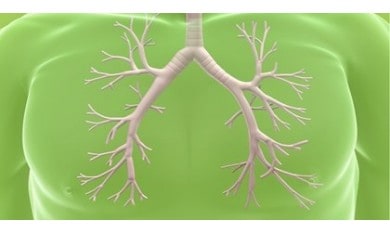“Breathe through your nose!” The reasons why you should follow that advice – and more information on the respiratory organs – can be found here.


Respiratory Organs

Coughing
Coughing is often a symptom of a viral infection, but it can also have other causes. Learn about them here.

Cough Test
Dry cough? Tickly cough? Sticky mucus? Find out which type of cough you are suffering from and take the right action against it.

Respiratory Organs
“Breathe through your nose!” The reasons why you should follow that advice – and more information on the respiratory organs – can be found here.
Read More

Coughing
Coughing is often a symptom of a viral infection, but it can also have other causes. Learn about them here.
Read More

Cough Test
Dry cough? Tickly cough? Sticky mucus? Find out which type of cough you are suffering from and take the right action against it.
Read More
Respiratory Organs
Our respiratory organs comprise of the nose, mouth, windpipe, bronchi and lungs. When we inhale, the air follows precisely this path. The air is warmed and moistened in the nose, and undergoes coarse cleaning by tiny hairs on the nasal mucosa. When you inhale through your mouth, the air is not moistened and reaches the windpipe without having been cleaned. That’s why it is always better to breathe through your nose.

The air flows through the windpipe into the bronchi. The windpipe and the bronchi are lined with a countless number of extremely fine cilia (microscopic hairs), which are in perpetual movement in the direction of the throat. This serves to expel small foreign objects and mucus.
The term “bronchi” refers to the passage from the windpipe to the lungs. At the end of the windpipe, the channels of the bronchi separate and form a system of fine tubes with numerous treelike branches. These extremely fine branches transition into the alveoli. The lungs comprise more than 300 million of these tiny alveolar sacs, which are surrounded by a thick network of extremely small blood vessels. This is where the oxygen from the air is exchanged with the carbon dioxide which is formed in the body.
Coughing - the causes
Our respiratory organs comprise of the nose, mouth, windpipe, bronchi and lungs. When we inhale, the air follows precisely this path. The air is warmed and moistened in the nose, and undergoes coarse cleaning by tiny hairs on the nasal mucosa. When you inhale through your mouth, the air is not moistened and reaches the windpipe without having been cleaned. That’s why it is always better to breathe through your nose.

Dry Cough
With a dry cough, the mucosa of the throat is irritated and the slightest stimulus can induce coughing or trigger a real coughing fit. In this case, the airways are not cleaned and the coughing therefore has no benefit. Especially in the evening and at night, this robs us or our children of sleep.
Productive Cough
With a productive cough, the formation of mucus increases. This cough leads to expectoration. The mucus can act as fertile ground for other pathogenic germs, such as bacteria, which is why it is important to support the process of coughing up the mucus, instead of suppressing the urge to cough.
Chronic? Or still acute?
We differentiate between acute and chronic coughs. Acute coughing lasts no longer than eight weeks. As defined by the WHO, coughing is considered chronic when coughing and expectoration occurs on most days for at least three months in two consecutive years.
Coughing - the treatment
Coughing is one of the symptoms that you can treat very well on your own with non-prescription medications from the pharmacy – provided that there are no other symptoms such as high fever, breathing difficulty, purulent sputum, or painful breathing.
For purposes of self-medication, both plant-based and chemically defined drugs are available. It is important, especially where children are involved, to select an effective and well-tolerated medication. Plant-based cough medicines are highly regarded for the treatment of cold-related coughing, for example. In such cases, ivy is particularly often recommended.
Ivy soothes the body and its effective action provides impressive results at the same time. Its ingredients can not only liquefy the mucus, but also relieve the cramping of the bronchial muscles and reduce the urge to cough. Many other products can perform only one function – suppress coughing – or the other – liquefy mucus. Ask your pharmacist to advise you on Prospan® with its Special-Ivy-Extract.

